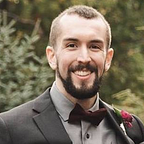How Native American Halloween Costumes are Culturally Appropriated
Halloween is approaching, in one form or another. It’s likely, even amidst the pandemic, there’ll be parties, trick-or-treating, and eccentric costume contests. Some Halloween aspects will probably stay the same — having too much “blood wine,” eating those Reese’s Cups that were meant for the kids, maybe even texting that ex you shouldn’t be texting. Many others will also remain, too, particularly culturally appropriated costumes.
There’s a slew of options for such costumes. From mock gypsy garb to the mustachioed, donkey-riding Mexican , there’s lots of ridiculous choices to get red about when you come across one somewhere. One of the most enduring, though, are Native American costumes. Perhaps with a longer history than any other, Native costumes are also some of the most consistently well-stocked. More deeply, they promote enduring racial stereotypes for one of our country’s most marginalized groups, who daily struggle to reverse a sense of “invisibility” in the U.S.
So how can we change this? What’s all the fuss about cultural appropriation? And what’s the history behind Native American costumes? It’s an important issue that, given our country’s heightened sense of racial oppression, we have a real opportunity to change for good.
